Industrial Bearings: A Comprehensive Guide for Rotating Equipment Maintenance and Repair
Industrial Bearings are essential components in the machinery of countless industries, enabling efficient movement and reducing friction between moving parts. Whether you’re managing turbines, compressors, or large industrial machines, the proper selection, maintenance, and repair of industrial bearings can drastically impact your operational efficiency and downtime.
This guide explores the different types of bearings used in industrial equipment, their specific applications, the common causes of bearing failure, and how to maintain bearings to extend their lifespan. Whether you’re an engineer or a business owner, mastering the knowledge of industrial bearings is crucial for smooth operations.
Understanding Industrial Bearings
At its core, a bearing is a mechanical element that supports relative motion and minimizes friction. The industrial bearings market, expected to reach $53.3 billion by 2027, plays a pivotal role in the efficiency of mechanical systems worldwide.
Industrial bearings are vital for ensuring the smooth rotation of shafts and supporting heavy loads. Selecting the right type of bearing, along with proper maintenance, can prevent costly downtimes and mechanical failures.
Click Here and Contact Us
24/7 EMERGENCY SERVICES
Types of Industrial Bearings
Ball Bearings
Ball bearings are perhaps the most common type of bearing used in rotating equipment. The spherical rolling elements within these bearings minimize friction between the inner and outer rings, enabling smooth rotational motion.
Applications
Ball bearings are versatile, appearing in everything from small household appliances to large industrial machines. They’re particularly useful when both radial and axial loads are moderate.
Benefits
- Low friction and high-speed performance
- Versatile across a wide range of industries
- Durable under moderate loads
Maintenance Tip
Ensure consistent lubrication and avoid excessive axial loads, as ball bearings perform best with radial forces. Overloading with axial pressure can lead to early failure.
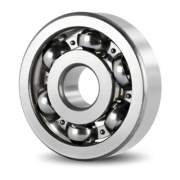 Roller Bearings
Roller Bearings
Roller bearings use cylindrical rollers, allowing them to handle greater radial loads. These bearings come in multiple forms: cylindrical, tapered, and spherical roller bearings.
Applications
- Cylindrical roller bearings: Heavy-duty equipment like gearboxes and conveyors
- Tapered roller bearings: Axles, particularly in automotive applications
- Spherical roller bearings: Equipment exposed to misalignment and heavy radial loads, such as industrial turbines.
Benefits
- Increased load capacity
- Ability to handle misalignment in spherical types
- Long lifespan under heavy loads
Maintenance Tip
Keep an eye on the alignment and lubrication to prevent roller bearings from premature wear due to overloading or misalignment. This is especially critical in high-load environments.
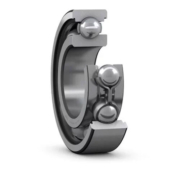 Deep Groove Ball Bearings
Deep Groove Ball Bearings
Deep groove ball bearings are among the most widely used bearings in industrial applications. The deep raceway grooves on the inner and outer rings allow these bearings to accommodate both radial and axial loads efficiently, enabling smooth and reliable performance across a variety of industries.
Applications
Deep groove ball bearings are found in electric motors, pumps, compressors, gearboxes, and agricultural machinery. Their ability to handle high speeds and diverse load types makes them a common choice in applications where versatility is key.
Benefits
- High-speed capability with low friction
- Can support combined loads (both radial and axial)
- Long service life and minimal maintenance requirements
Maintenance Tip
To maintain performance, ensure consistent lubrication and protect the bearings from contaminants such as dust or moisture. Proper handling during installation is also key to preventing misalignment.
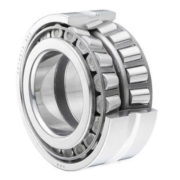 Double Row Ball Roller Bearings
Double Row Ball Roller Bearings
Double row ball roller bearings are designed to handle greater radial loads than single-row bearings. They use two rows of rolling elements, allowing for a better distribution of load and increased durability in heavy-duty applications.
Applications
These bearings are ideal for heavy machinery, including cranes, gearboxes, and machine tools, where the load capacity is crucial. They are commonly used in environments where equipment is subject to high stress and continuous use.
Benefits
- Enhanced load-carrying capacity due to the dual-row design
- Reduced friction and better radial load distribution
- Improved durability in challenging environments
Maintenance Tip
To ensure longevity, check for proper alignment during installation. Regular lubrication and vibration monitoring will help maintain the bearing’s performance, especially under heavy load conditions.
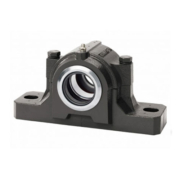 Mounted Block Bearing Unit
Mounted Block Bearing Unit
Mounted block bearing units are pre-assembled bearing units housed in rigid mounting blocks, designed for easy installation and alignment. These units are particularly useful in applications requiring simplified maintenance and operational reliability.
Applications
They are commonly found in conveyor systems, agricultural equipment, industrial fans, and food processing machinery. The pre-lubricated design ensures longer service intervals and reliable performance in various industries.
Benefits
- Easy installation and low maintenance
- Pre-lubricated for extended service life
- Resistant to misalignment and harsh environmental conditions
Maintenance Tip
Inspect the mounting block periodically for wear or contamination. Ensure proper alignment during installation, as misalignment can lead to premature wear and operational inefficiency.
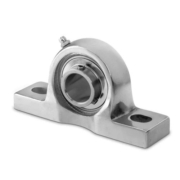 Pillow Block Bearing Unit
Pillow Block Bearing Unit
Pillow block bearing units consist of mounted bearings with a housing resembling a pillow. These bearings are designed to support a rotating shaft and offer reliable performance in industrial environments.
Applications
These bearings are widely used in conveyor belts, industrial fans, HVAC systems, and textile machinery. Their design allows them to handle moderate loads and speeds while providing vibration reduction and stability.
Benefits
- Quick installation and easy maintenance
- Effective at reducing vibration and noise
- Suitable for moderate-speed applications with some tolerance for misalignment
Maintenance Tip
Regularly inspect for dust accumulation and ensure proper lubrication to prevent wear. Maintaining cleanliness around the housing and bearings can prolong service life and reduce operational downtime.
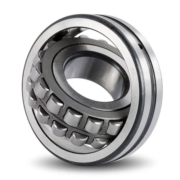 Spherical Block Bearing
Spherical Block Bearing
Spherical block bearings are designed to accommodate misalignment while supporting high radial and axial loads. These bearings use spherical rollers that offer flexibility and durability in demanding industrial applications.
Applications
They are commonly used in heavy-duty industrial machinery, mining equipment, wind turbines, and construction machinery. Spherical block bearings are ideal for harsh and dirty environments where equipment is exposed to significant stress.
Benefits
- High load-carrying capacity, even under misalignment
- Durable in harsh conditions and dirty environments
- Suitable for both radial and axial loads
Maintenance Tip
Ensure regular lubrication, especially in environments exposed to dust and dirt. Regularly inspect the alignment to prevent excessive wear and extend the bearing’s operational life.
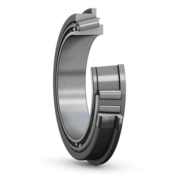 Tapered Roller Bearings
Tapered Roller Bearings
Tapered roller bearings are designed to handle both radial and axial loads, using conical rollers that distribute loads more efficiently across the bearing. They are particularly suited for applications involving heavy loads and shock forces.
Applications
These bearings are frequently used in automotive axles, gearboxes, construction equipment, and heavy machinery. Their robust design allows them to perform reliably under significant stress and load conditions.
Benefits
- High load-bearing capacity for both radial and axial loads
- Effective in handling shock loads
- Reliable and durable for automotive and industrial applications
Maintenance Tip
Regular lubrication is critical for tapered roller bearings, as inadequate lubrication can lead to increased friction and premature failure. Periodic alignment checks and monitoring for excess vibration are also necessary to maintain peak performance.
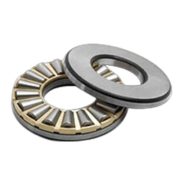 Thrust Bearings
Thrust Bearings
Thrust bearings are designed to handle axial loads—those applied parallel to the shaft’s axis. These bearings come in various forms, such as ball thrust bearings and roller thrust bearings.
Applications
Used in automotive and aerospace industries, thrust bearings are commonly found in systems where axial support is needed, like propellers and industrial pumps.
Benefits
- Effective at managing high axial loads
- Available in various configurations for different needs
Maintenance Tip
Thrust bearings often require higher maintenance due to the intense forces they handle. Regular checks for axial alignment are crucial to avoid damage and ensure longevity.
Plain Bearings (Sleeve Bearings)
Plain bearings, also called sleeve bearings or bushings, are perhaps the simplest type of bearing. With no rolling elements, plain bearings rely on lubrication to reduce friction between the moving shaft and the stationary housing.
Applications
Best suited for low-speed, high-load applications such as heavy industrial machinery and marine equipment.
Benefits
- Cost-effective and simple in design
- Reliable in harsh environments
Maintenance Tip
Ensure adequate lubrication is always present. Without it, plain bearings may fail quickly due to metal-on-metal contact.
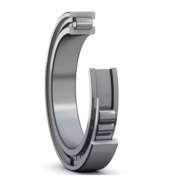 Needle Bearings
Needle Bearings
Needle bearings are a form of roller bearing but with cylindrical rollers that are much smaller in diameter. This makes them ideal for applications where high radial loads are necessary, but space is limited.
Applications
Needle bearings are often found in automotive transmissions and industrial gearboxes, where compact design and high load capacity are essential.
Benefits
- Compact design with high load-bearing capacity
- Durable under heavy radial loads
Maintenance Tip
Regular inspection and lubrication will help prevent the rapid wear that can occur due to their small size and high-load environments.
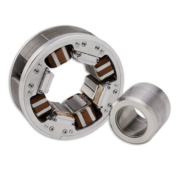 Magnetic Bearings
Magnetic Bearings
Magnetic bearings operate using magnetic fields to levitate and support a rotating shaft without any physical contact, eliminating friction.
Applications
Used in high-precision equipment such as centrifugal compressors, flywheels, and turbines, magnetic bearings are perfect for high-speed applications where traditional bearings would wear out quickly.
Benefits
- Zero friction, leading to extended service life
- Excellent for high-speed, high-precision applications
Maintenance Tip
While magnetic bearings are virtually maintenance-free, regular system checks are essential to ensure the magnetic levitation operates correctly and there is no system interference.
Ceramic Bearings
Ceramic bearings, made from materials like silicon nitride or zirconia, are well-known for their durability, resistance to corrosion, and ability to withstand high temperatures.
Applications
Ideal for aerospace, medical equipment, and high-performance racing, ceramic bearings are employed in environments where extreme temperatures and high speeds are common.
Benefits
- Superior hardness and corrosion resistance
- Operate well in aggressive environments and high-temperature applications
Maintenance Tip
Ceramic bearings require expert handling and maintenance, but their ability to resist wear makes them ideal for long-term, high-performance applications.
Benefits of Proper Industrial Bearing Maintenance
Proper maintenance of industrial bearings is essential for avoiding unnecessary downtime, expensive repairs, and even safety hazards.
Bearings that are regularly inspected and properly lubricated can run smoothly for years without issue.
Increased Lifespan
By ensuring adequate lubrication and addressing issues like misalignment early, you can significantly extend the lifespan of your bearings, reducing long-term costs.
Reduced Operational Costs
Replacing bearings prematurely due to poor maintenance can result in downtime, costing industries millions. Keeping bearings in optimal condition reduces the need for expensive repairs and replacements.
Optimized Performance
Well-maintained bearings allow machinery to run smoothly and efficiently, leading to optimized performance and higher productivity rates.
Common Causes of Bearing Failure
Despite their critical role, bearings are often the most vulnerable parts of industrial machinery. Understanding the common causes of bearing failure is the first step in preventing it.
1. Overloading
Exceeding the load capacity of a bearing can lead to deformation of rolling elements and races, causing premature failure. It’s essential to choose a bearing that matches the operating load of the equipment.
2. Misalignment
Even the best bearings can fail quickly if they are misaligned. Misalignment causes uneven wear, friction, and overheating.
3. Insufficient Lubrication
Without proper lubrication, friction increases, which leads to heat generation and potential bearing failure. Regular checks of lubrication levels and the use of appropriate lubricants are necessary.
How to Prevent Industrial Bearing Failures
- Proper Load Calculation: Ensure that the selected bearing is rated for the load it will handle.
- Regular Maintenance: Schedule routine inspections and lubrication to detect wear early.
- Accurate Alignment: Ensure correct alignment during installation to prevent uneven pressure and premature wear.
- Timely Replacement: Replace bearings at the first sign of wear to avoid unexpected breakdowns.
Frequently Asked Questions (FAQs)
What is the most common type of bearing used in industrial machinery?
The most common type is the ball bearing, known for its versatility and ability to handle both radial and axial loads.
How can I prevent bearing failure?
To prevent bearing failure, focus on regular lubrication, ensuring proper alignment, and not exceeding load limits.
What is the difference between ball bearings and roller bearings?
Ball bearings use spherical elements, ideal for moderate loads and high speeds. Roller bearings use cylindrical elements and are better for heavier radial loads.
Why do bearings overheat?
Overheating often results from lack of lubrication, overloading, or misalignment.
Industrial bearings are the backbone of efficient rotating equipment operations, and proper selection, maintenance, and repair can save both time and money.
At ISS/Rotating Mechanical Solutions, we specialize in providing expert solutions for all your industrial bearing needs.
Call us today at 303-594-7610, or visit us at RMSCcolorado.com to ensure your equipment runs smoothly.
For inquiries, email us at service.0400@iss-na.com for fast and reliable service.
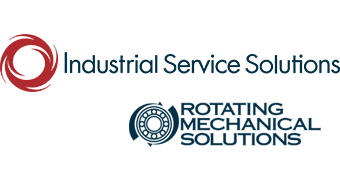
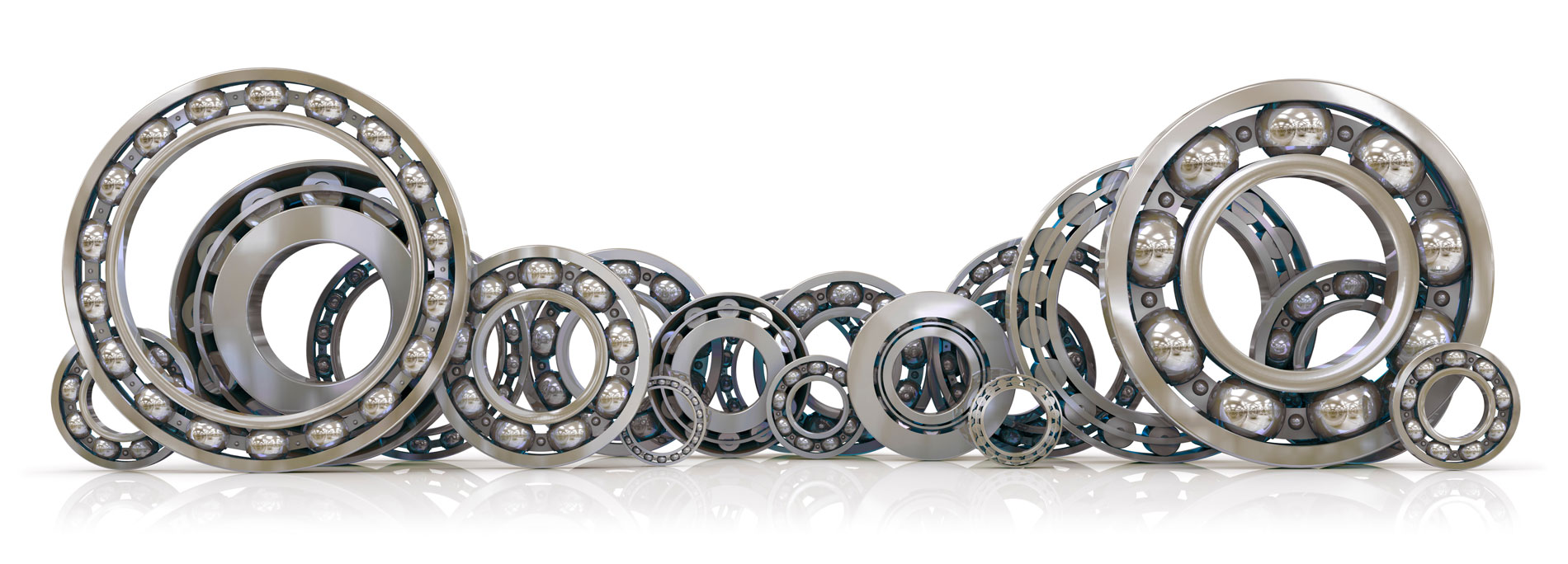
 ISS/Rotating Mechanical Solution proudly provides Industrial Equipment Solutions for our customers in the following states:
ISS/Rotating Mechanical Solution proudly provides Industrial Equipment Solutions for our customers in the following states:

